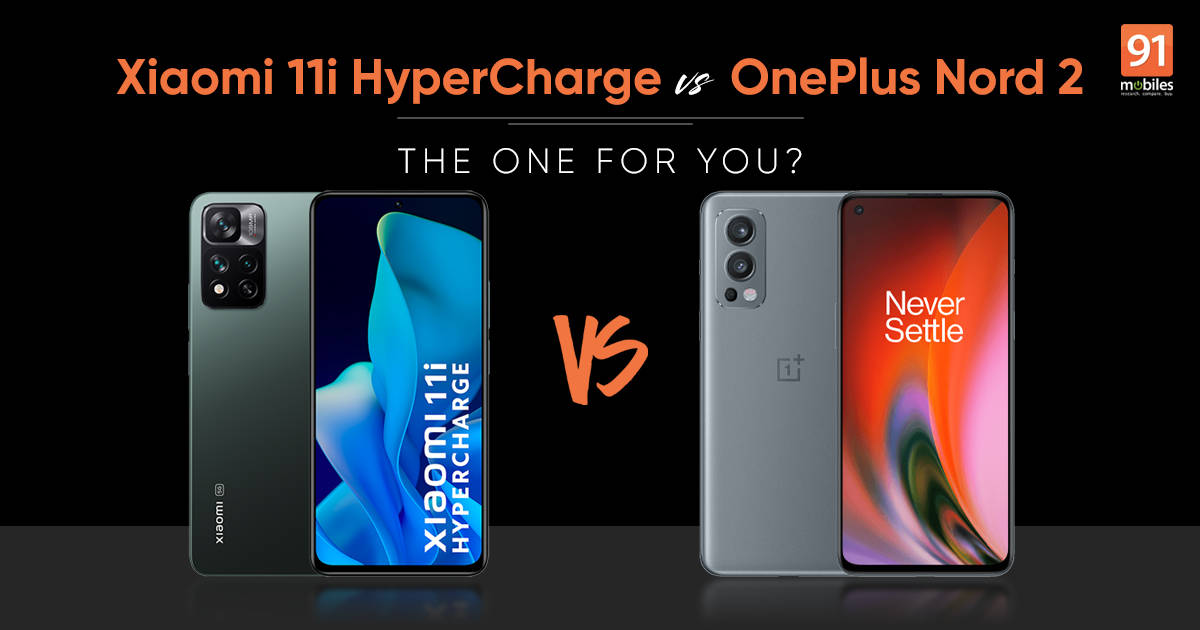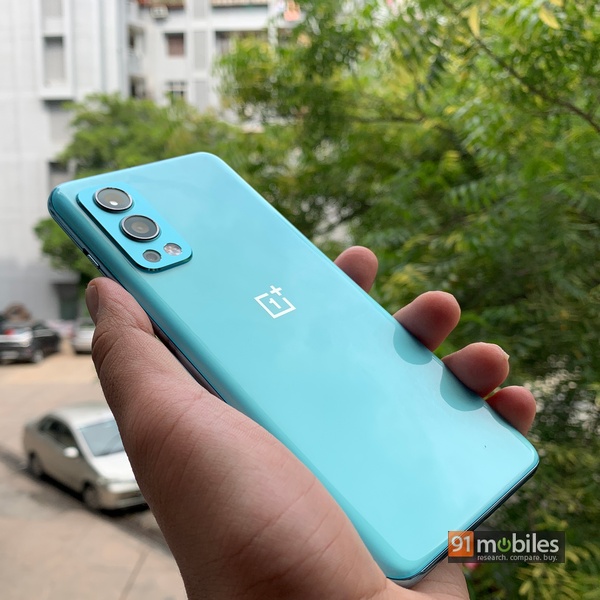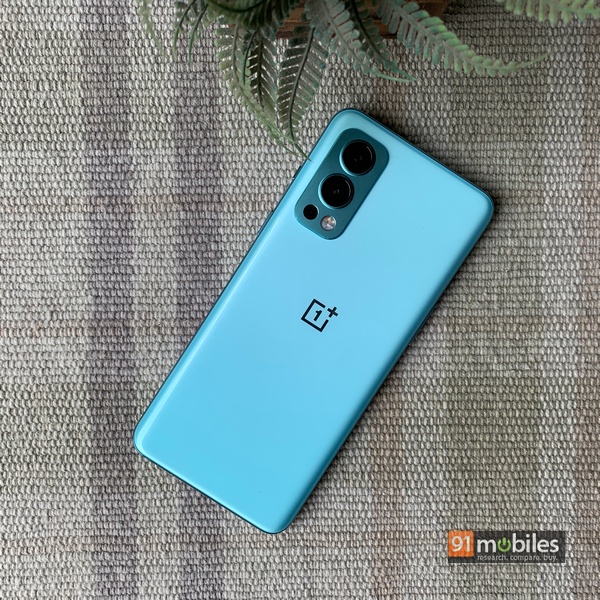
They are both much-hyped devices, with one even having “Hype” in its very name. Both aim to deliver super performance in the very competitive Rs 25,000 – Rs 30,000 price segment. And both come from brands known for delivering very good value for money. We are talking of the OnePlus Nord 2 and the recently-launched Xiaomi 11i HyperCharge. Both phones are priced close to each other, and both come with their own strengths and special features. But which of the two is the one for you? Let us work that out.
Round 1: Design and appearance

The two phones have glass on front and back with frames of carbonate, but are cut from very different design cloths. The Xiaomi 11i HyperCharge (above) comes with very iPhone-like looks with flat sides and a flat front and back, while the OnePlus Nord 2 follows a more conventional flat front and curved back design. The Nord 2 (below) is way more compact than the 11i HyperCharge with its height of 159.1mm as compared to 163.6mm of the 11i HyperCharge, and is also slimmer and lighter – 8.2mm and 189g as against 8.3mm and 204g. However, the 11i HyperCharge is way more striking because of its flat, coloured sides and also very interesting shades like Camo Green and Purple Mist. Those who want a smaller phone will prefer the Nord 2, but if you want a phone that stands out from the crowd, then the Xiaomi 11i HyperCharge is the one that gets a plus.
Winner: Xiaomi 11i HyperCharge
Round 2: Display

Both phones come with AMOLED displays. The Xiaomi 11i HyperCharge has a clear edge here, though, with a larger 6.67-inch HD+ display with 120Hz refresh rate, as compared to the 6.43-inch HD+ display with 90Hz refresh rate on the Nord 2. And it is not just a matter of figures – the display on the Xiaomi device is discernibly brighter and more colourful than the one on the Nord 2.
Winner: Xiaomi 11i HyperCharge
Round 3: Processor and memory

The OnePlus Nord 2 wins this round comfortably. The phone runs on the MediaTek Dimensity 1200 processor, which is superior to the MediaTek Dimensity 920 driving the Xiaomi 11i HyperCharge. In terms of RAM and storage too, the OnePlus device has a clear edge with RAM and storage variants of 6GB / 128GB, 8GB / 128GB and 12GB / 256GB as compared to the 6GB / 128GB and 8GB / 128GB variants of the Xiaomi 11i HyperCharge. The 11i HyperCharge does have expandable storage, but this round still goes to the OnePlus Nord 2, thanks to that processor.
Winner: OnePlus Nord 2
Round 4: Cameras

Both phones have triple rear cameras. You would think that the Xiaomi 11i HyperCharge would be the favourite to win this round with its 108-megapixel main sensor as compared to the 50-megapixel one on the OnePlus Nord 2. While the 11i HyperCharge does deliver a lot of detail, we felt that the Nord 2 scored over it in terms of colour handling. The presence of OIS on the Nord 2’s camera also gave it a clear edge in low light scenarios and videos. Both phones come with 8-megapixel ultrawide cameras and 2-megapixel cameras for mono shots in the Nord 2 and macros in the 11i HyperCharge. The ultrawide and macro sensors on the 11i HyperCharge deliver slightly better results than those on the Nord 2, but the Nord 2 wins the round with its 32-megapixel selfie camera taking much better snaps than the 16-megapixel selfie snapper on the 11i HyperCharge. You will get more image and video editing options on the Xiaomi device, but for sheer image quality, we would vote for the Nord 2.
Winner: OnePlus Nord 2
Round 5: Gaming and multimedia

When it comes to gaming and multimedia, the battle becomes an interesting one. In terms of sheer power, the OnePlus Nord 2 has a clear edge with its Dimensity 1200 processor being superior to the Dimensity 920 on the Xiaomi 11i HyperCharge. Games like Call of Duty and Genshin Impact run much better on the Nord 2. However, both phones are broadly similar in handling more casual titles and while the 11i HyperCharge does not have the processing power of the Nord 2, its larger and brighter display and superior sound deliver a much more immersive experience. The 11i HyperCharge is actually the better of the two when it comes to viewing shows and videos, and it also has a 3.5 mm audio jack.
Its clear superiority in gaming gets the Nord 2 this round but if you are more into watching shows, then perhaps the 11i HyperCharge is the one for you.
Winner: OnePlus Nord 2
Round 6: Software and UI

A year ago, this round would have gone to the OnePlus device. However, recent times have seen Xiaomi clean up its MIUI and remove bloatware and ads. The result is a feature-rich and yet smoothly working interface. OnePlus’ OxygenOS remains one of the cleaner Android interfaces out there, but the difference between it and MIUI is mainly of preference. Stock Android fans will prefer OxygenOS but more mainstream users will be attracted to the feature-rich MIUI. Both interfaces run on top of Android 11, and both are due for updates soon. We are calling this one a tie.
Winner: Tie
Round 7: General performance

When it comes to daily tasks like web browsing, calls, social media and messaging, the battle between the two phones is very even. The Nord 2’s smaller size makes it easier to handle, but the larger display of the 11i HyperCharge gives you more viewing and typing area. We also prefer the fingerprint scanner on the side of the 11i HyperCharge as compared to the under-display one on the Nord 2, which is discernibly slower. Call quality on both devices was about the same, and both devices come with support for 5G. We are calling this one a tie as well.
Winner: Tie
Round 8: Battery life and charging

Both phones come with 4,500mAh batteries, and both can easily see off a day of normal to heavy use. However, the Nord 2’s battery does last a bit more than the 11i HyperCharge, going comfortably into a second day. Perhaps that bigger display and higher refresh rate of the Xiaomi device gobbles up more battery. When it comes to charging speed, however, there is only one winner. The Nord 2 is no slouch when it comes to charging and its 65W Warp Charger gets the phone from nothing to full in slightly more than half an hour. That’s impressive, until you use the Xiaomi 11i HyperCharge, which gets charged in under twenty minutes, thanks to its 120W HyperCharge charger, making it the fastest charging phone around. Even with boost charging switched off, the 11i HyperCharge charges in well under half an hour. As we said, only one winner here.
Winner: Xiaomi 11i HyperCharge
Round 9: Price

When it comes to price, the Xiaomi 11i HyperCharge is available at Rs 26,999 for the 6GB / 128GB variant and Rs 28,999 for the 8GB / 128GB variant. This is below the Nord 2, which starts at Rs 27,999 for the 6GB / 128GB variant, with the 8GB / 128GB variant available at Rs 29,999. The Nord 2 does have a 12GB / 256GB variant (Rs 34,999), which the 11i HyperCharge lacks, but if money is tight, the Xiaomi 11i HyperCharge is definitely the choice.
Winner: Xiaomi 11i HyperCharge
So which one should you go for?

Which of the two phones you should opt for depends, as always, on your priorities. If charging speed really
matters to you, then the Xiaomi 11i HyperCharge wins this one easily. On the other hand, if you are looking for processing power and good cameras, the OnePlus Nord 2 has a clear edge. Go beyond these however and the choice gets tougher – the 11i Hypercharge has a better design, display and speakers, while the Nord 2 can claim to come with cleaner software. Whichever way you look at it, it is a close finish. Speaking for ourselves, we would vote for the OnePlus Nord 2 for its camera, processor prowess and more compact form factor – and it does not charge slowly either – but we can see folks getting attracted to the 11i HyperCharge with good reason. The silver lining to this choice cloud is that no matter which device you pick, you will end up with something special.
With inputs from Akriti Rana













